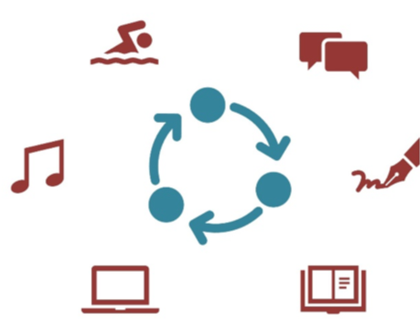NFE in sport
Step 1: Choose your method!
ould you ever go to the battle unarmed? Of course not! No matter how well informed you are, regardless of how familiar you are with all the theoretical concepts related to your aim, you will definitely reach a dead end unless you select the most suitable and appropriate tools to apply your knowledge and benefit from your own capacities as sports providers.

Coming up with the suitable method or activity for your educational purposes is no easy task. On the contrary, it can be quite challenging and risky. However, there a few elements that can help you in the process and we are more than willing to share:
– Set your aim: as a sports club or organization or a coach with active in the sports field, you have to deal with a great variety of topics that need to be addressed within the limit time of your training session. Nevertheless, this should not be an obstacle to your effort. What you need to do is to focus on one specific aspect you would like to tackle with the activity and let the rest…for later! A clear aim will help you bring substantial results and not get lost in the process with superficial and useless outcomes. It will be your guide through the process and it will help you avoid useless or not helpful moves, as well as to save time and offer your young athletes an true learning experience.
HOW DOES IT LOOK LIKE?
Aim: “to raise the athletes’ skills on managing wins and defeats after a game”
Define your objectives: these specific objectives reflect the small steps you need to take in order to achieve your main goal. Your objectives must be S.M.A.R.T. meaning they should be Specific (setting real numbers with real deadlines), Measurable (making sure that your goal is trackable), Attainable (working towards the goal that is challenging but possible), Realistic (being honest with yourself – you know what you and your team are capable of), and Time-bound (giving yourself a deadline)
HOW DOES IT LOOK LIKE?
Objectives:
• To understand the point of competing in sports
• To learn to respect and appreciate the opposing team
• To realize that winning is not the only goal in sports
• To accept that winning/losing does not define the quality of an athlete
Profile your target group: you have your aim, you have your objectives. And you are the one who knows better than anyone the individual characteristics of your athletes. Take into consideration their capacities, their level of skills, their needs and desires, the strong and weak points, their learning style, their age, even their background and their social interaction styles.
HOW DOES IT LOOK LIKE?
Profile:
• Age: 13 – 16
• Level: medium
• Learning style: auditory
• Strong points: passionate and willing to learn
• Weak points: overreacting, hard to get over
Time frame: sometimes passion and motivation can be very powerful but may also make us exaggerate and overestimate our capacities. Not in terms of skills necessarily but also in terms of time! It is important that you choose a method that can fit in the limited time frame of a training session, so that you will manage to start and finish on time, without rushing and without leaving anything pending. The key to success is to complete the learning cycle and offer a complete learning experience to your athletes.
HOW DOES IT LOOK LIKE?
Time-frame: 60 minutes
• Introduction and warm up: 10 minutes
• Implementation: 40 minutes
• Debriefing: 10 minutes
Having gone through this process you are now ready to start preparing your activity and bring some tangible results!
Select any NFE method from the tables we have prepared for you below in Chapter 5, or any other you may find at some other source, or even design your own method.
